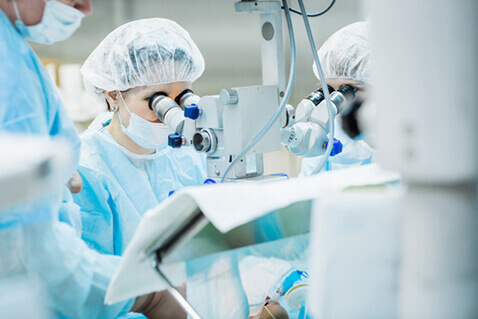
Cataract Treatment
How Are Cataracts Treated?

Your doctor will suggest cataract surgery only if he or she believes it will be of benefit, not just because you have a cataract. Many cataracts come on slowly and you may not realize how poor your vision has become. Oftentimes, patients come in for an eye exam if they fail their driver’s license eye exam and discover they have a cataract – even though they thought they were seeing well!
On occasion a cataract is removed not to improve vision but because it is causing another problem such as glaucoma, or because it interferes with another treatment the eye requires, such as laser surgery for diabetic retinal problems. There are times when a cataract is not removed because there is some other eye disease. Removing the cataract would not help the situation.
The most common surgical procedure used for removing cataracts is called phacoemulsification. A small incision is made in the side of the eye, where your physician inserts a tiny instrument that uses high-frequency ultrasound to break up the center of the cloudy lens and carefully suction it out.
A misconception some people have is that LASER is used to remove the cataract but this is not true. Recently LASER technology has been used in parts of the cataract surgery by some surgeons. The LASER is used to make some of the tiny incisions and help break up the cataract. The benefit to the patient is minimal as it does not make it more comfortable and the added steps take more time. Also, using the LASER is very expensive and is not covered by insurance so there is added out of pocket costs billed to the patient. The surgeons at RMEC have elected not to use the LASER at this time as the long and short term results have been studied and shown to be equal th the tried and proven phacoemulsification technique without the added cost to our patients.
After the cloudy lens has been removed, the surgeon will replace it with an intraocular lens implant (IOL) made of plastic, silicone or acrylic. This new, clear lens allows light to pass through and focus properly on the retina. This implant becomes a permanent part of your eye. In most cases, the IOL is inserted behind the iris, the colored part of your eye. You will spend a short period of time resting in the outpatient recovery area before you are ready to go home. You will need to have someone drive you home.



